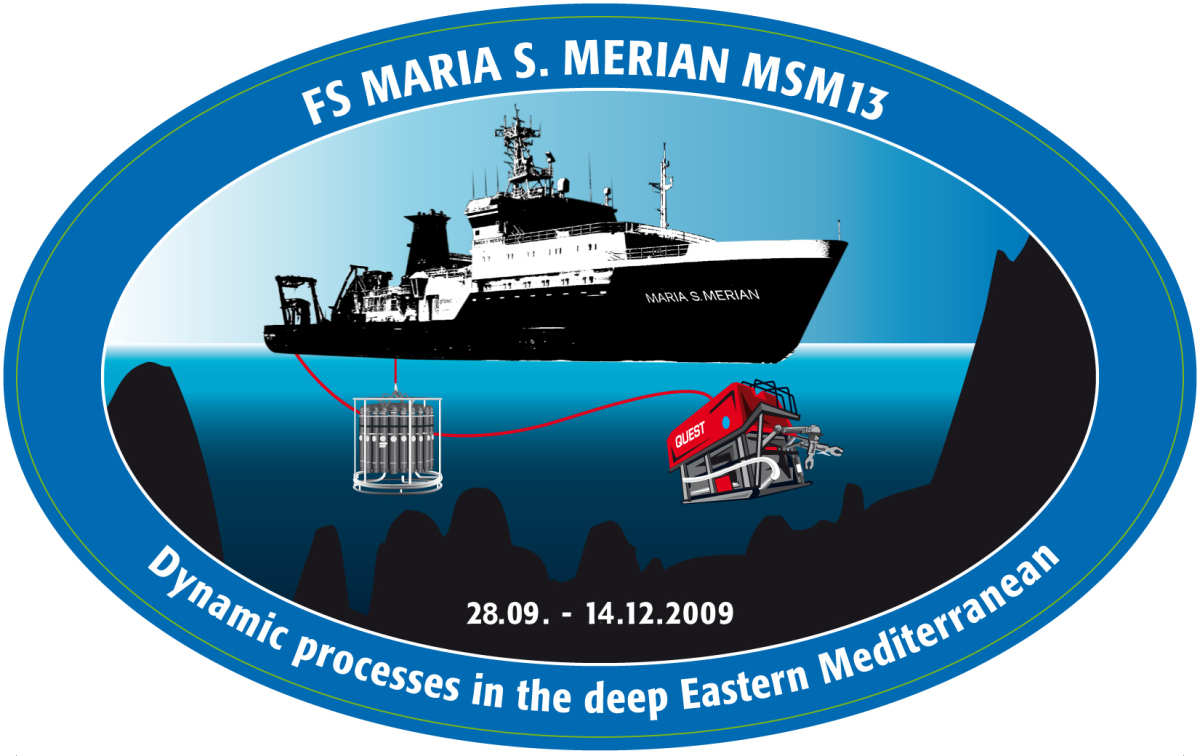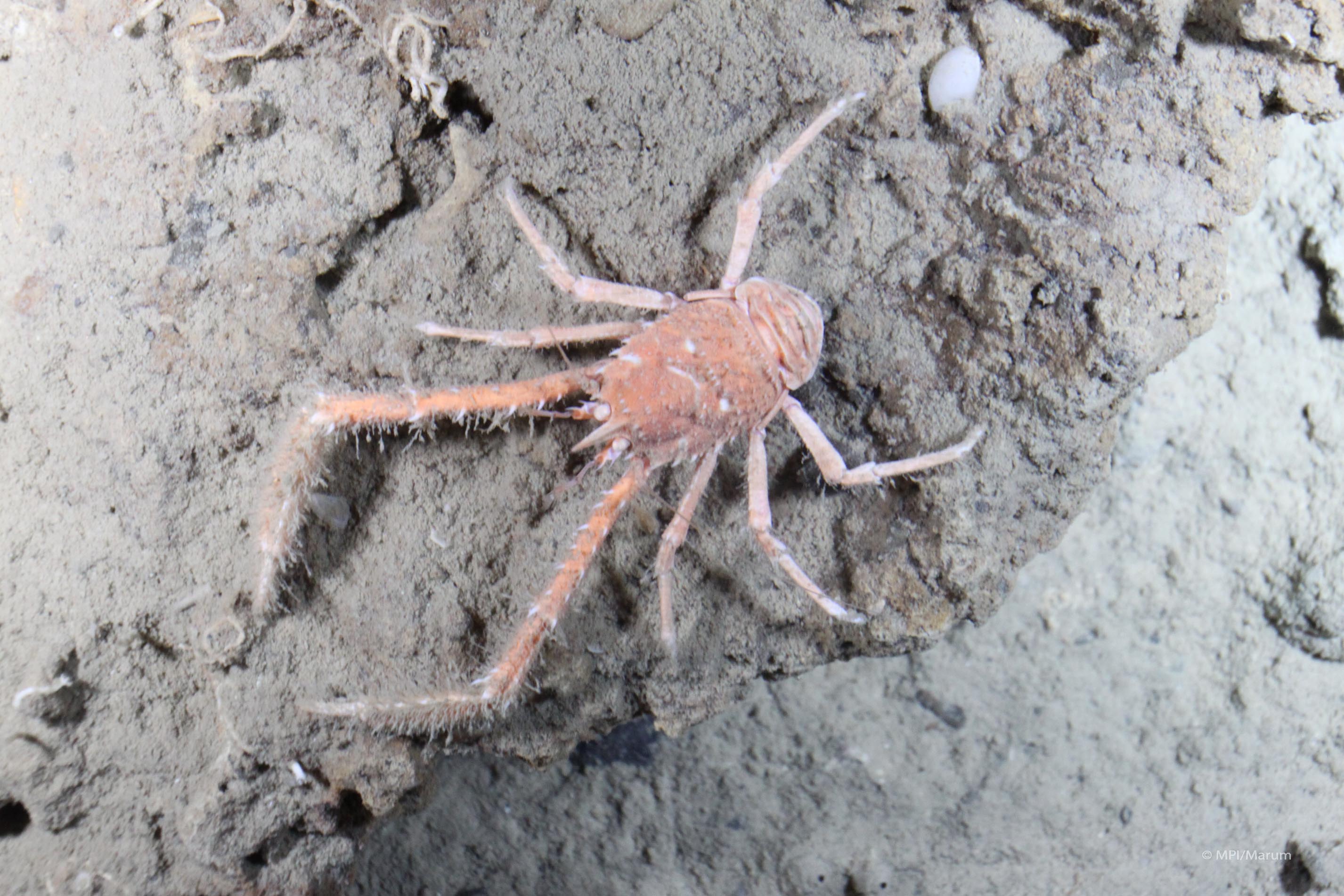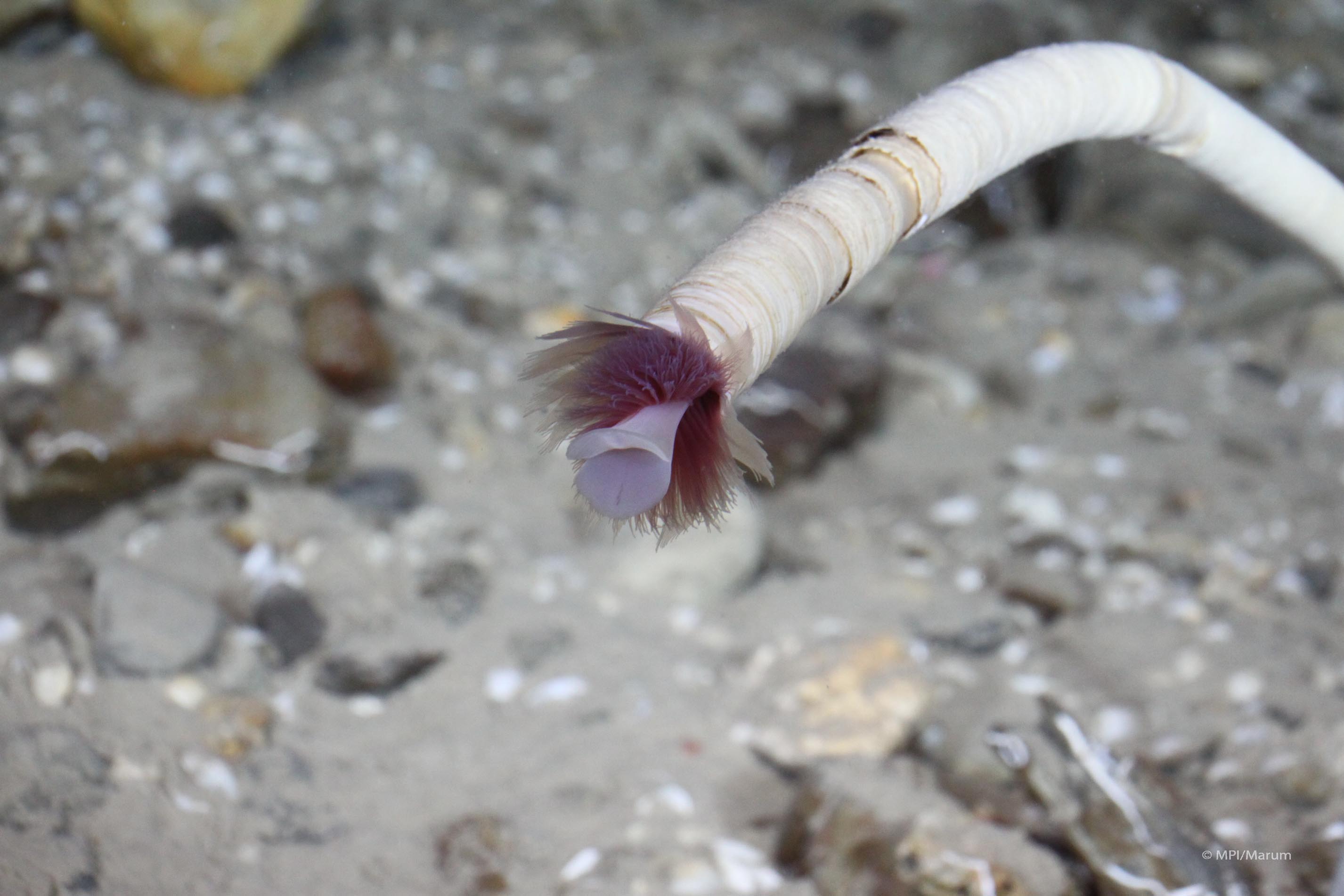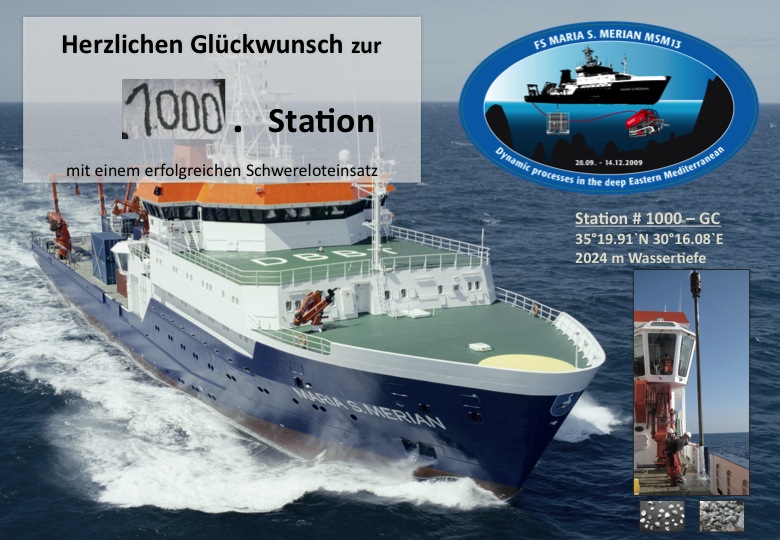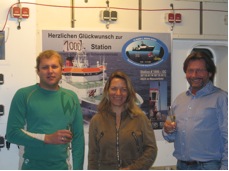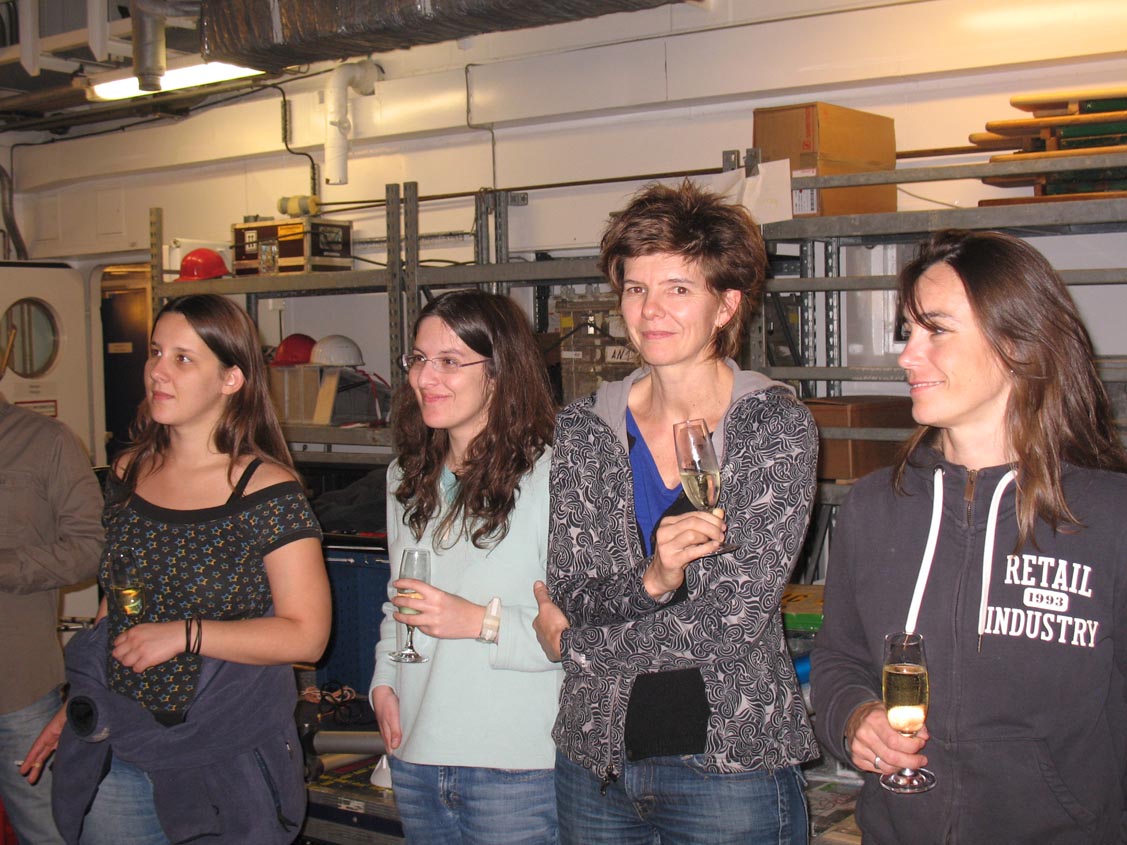Seitenpfad:
Weblog10
Chief scientist leg 4
Frank Wenzhoefer
f.wenzhoefer.d at
merian.briese-research.de
Frank Wenzhoefer
f.wenzhoefer.d at
merian.briese-research.de
Weblog 10
26.11. - 29.11.2009
Photos from the seafloor
The last days were characterized by successful and non-successful dives both for the AUV and ROV. During the last two ROV dives (D254 and D255) we collected a lot of samples from different habitats at the Amsterdam mud volcano. These samples are for microbiological, biogeochemical and faunal (see chapter below) analyses. The reduced sediments show a variety of benthic life and everyone is quite busy now to treat all samples.
26.11. - 29.11.2009
Photos from the seafloor
The last days were characterized by successful and non-successful dives both for the AUV and ROV. During the last two ROV dives (D254 and D255) we collected a lot of samples from different habitats at the Amsterdam mud volcano. These samples are for microbiological, biogeochemical and faunal (see chapter below) analyses. The reduced sediments show a variety of benthic life and everyone is quite busy now to treat all samples.
Fig. 1 Ann, Clara and Burak sieving sediment (Source: Axel Nordhausen)
During dive D254 on November 26 we also used a new high-resolution camera from MPI on the ROV. This camera was build by our college Ian MacDonald (Florida State University, USA). The obtained pictures are remarkable; placing the camera in front of interesting objects it offers the change to see even small details, which are otherwise not visible. However, a rather smooth operation of the ROV manipulator was necessary but with some patience the pilots were able to place the camera directly in front of the object. During the dive we also realized how much time it cost taking nice images. We spend half the dive for this purpose but it is worthwhile as can been on the pictures.
Fig. 2 MegaCam placed above an object with the ROV manipulator (Source: Marum, Bremen)
Fig. 3 High-resolution images showing a crab and tubeworm (Source: MPI/Marum, Bremen)
Further AUV dives where new acoustic settings were tested did not result in successful dives and two deployments had to be interrupted before the AUV could start its mission. AUV dive 26 on November 28 however has successful again, and the AUV team could perform the longest mission so far. During the 6 hour mission the AUV produced a map of the entire center area. The produced data will keep the AUV team busy for the next days. Rough sea conditions anyway made the next AUV dive impossible and so we hope to see some preliminary maps within the next days.
On November 27 we then celebrated station 1000, a successful gravity core from the mud volcano center.
On November 27 we then celebrated station 1000, a successful gravity core from the mud volcano center.
Fig. 4 Celebrating station 1000 (Source: A. Nordhausen & M. Römer)
Also our last dive D256 had to be interrupted due to problems with the multifunctional Orion manipulator, which caused an abort already after reaching the seafloor. Back on deck the ROV-team started immediately to repair the arm but since they have to open the complete hydraulic circuit this might take some time. We hope the ROV-team can quickly solve this problem and we can continue with our program.
Fauna at cold seeps (by Ann Vanreusel and Clara Rodrigues)
Cold seeps including mud volcanoes and pockmarks are considered as “hotspots” of increased biological activity on the seabed. In the food-poor environment of the East Mediterranean the contrast is large between the rather scarce fauna of the regular deep-sea sediments, and the highly abundant fauna of many of the cold seeps in the area, including the mud volcano Amsterdam. Initial ROV exploration of the different habitats on this mud volcano allowed us to identify the numerous spots or patches of increased bivalve or polychaete abundance. The presence of species such as the mussel Idas, clam (Vesicomyid) species and tube worms in association with dark grey or black sediments pointed to the presence of reduced habitats thriving on chemical derived energy. Once we had identified spots large enough to sample for all different biota present (from the bacteria to the largest sized animals) we could start coring. Numerous push cores and blade cores were successfully collected from the seeping areas, some still bubbling while being sampled. Once the ROV was back on board, these sediment samples were divided among the different research groups taking part in this multiple scale comparison of the seep biota. And then the hardest work still had to start: sieving and slicing sediment cores to the smallest size fraction and the deepest sediment layers. For the macrofauna tens of blade cores were carefully sliced and sieved by Clara and Ann, also assisted by Burak our Turkish observer.
Fauna at cold seeps (by Ann Vanreusel and Clara Rodrigues)
Cold seeps including mud volcanoes and pockmarks are considered as “hotspots” of increased biological activity on the seabed. In the food-poor environment of the East Mediterranean the contrast is large between the rather scarce fauna of the regular deep-sea sediments, and the highly abundant fauna of many of the cold seeps in the area, including the mud volcano Amsterdam. Initial ROV exploration of the different habitats on this mud volcano allowed us to identify the numerous spots or patches of increased bivalve or polychaete abundance. The presence of species such as the mussel Idas, clam (Vesicomyid) species and tube worms in association with dark grey or black sediments pointed to the presence of reduced habitats thriving on chemical derived energy. Once we had identified spots large enough to sample for all different biota present (from the bacteria to the largest sized animals) we could start coring. Numerous push cores and blade cores were successfully collected from the seeping areas, some still bubbling while being sampled. Once the ROV was back on board, these sediment samples were divided among the different research groups taking part in this multiple scale comparison of the seep biota. And then the hardest work still had to start: sieving and slicing sediment cores to the smallest size fraction and the deepest sediment layers. For the macrofauna tens of blade cores were carefully sliced and sieved by Clara and Ann, also assisted by Burak our Turkish observer.
Fig. 5 Hunting for fauna (Source: C. Rodrigues)
Fig. 6 Example of macrofauna found at Amsterdam MV (Source: C Rodrigues & A. Vanreusel)
The dark, smelly, sticky sediments may not look very tempting or of any interest, but for biologists they contain a wealth of life, still containing many secrets on adaptation to these extreme biochemical conditions. The nice weather and sea conditions of the east Mediterranean also added significantly to the pleasure of sorting these biological rich samples at the sieving table on the after deck, although it could take hours. At the end of the day we already became aware of the high diversity of the present bivalve and polychaete species. In contrast to other seeps worldwide the East Med seep fauna is characterized by much smaller species but the local diversity seemed at first sight relatively high. The smaller organisms such as the mm sized nematodes and copepods were not sorted on board but samples were, after carefully slicing in layers of 1 cm, preserved in different conditions for further analysis later in the lab. We did not collect so far the charismatic tubeworms, which are so typical for seep habitats. However we observed them very regular on the Amsterdam mud volcano, some posing for excellent pictures of their extruded pink plumes with which they take up mainly oxygen form the sea water. The centre and north of the mud volcano never showed dense aggregations of these tube worms, but rather scattered distribution patters. Only to the south east of the mud volcano in areas of dense and large carbonate crusts these typical seep fauna showed higher abundances.
Frank Wenzhöfer
Frank Wenzhöfer

